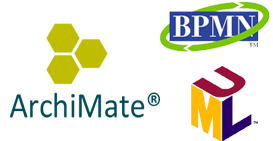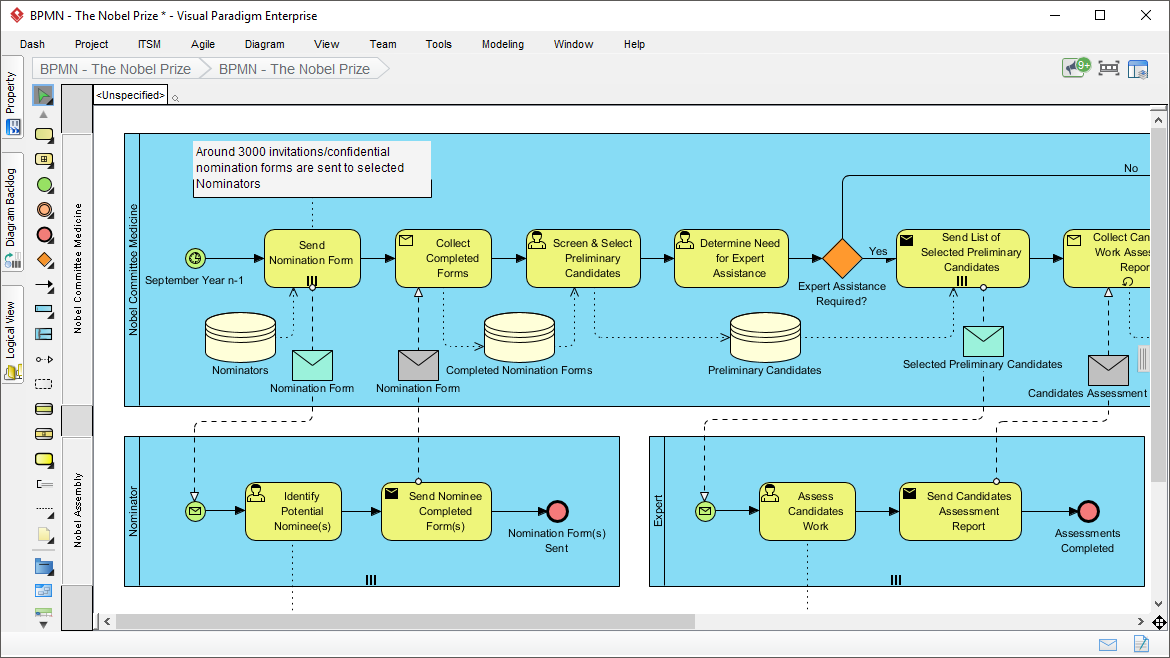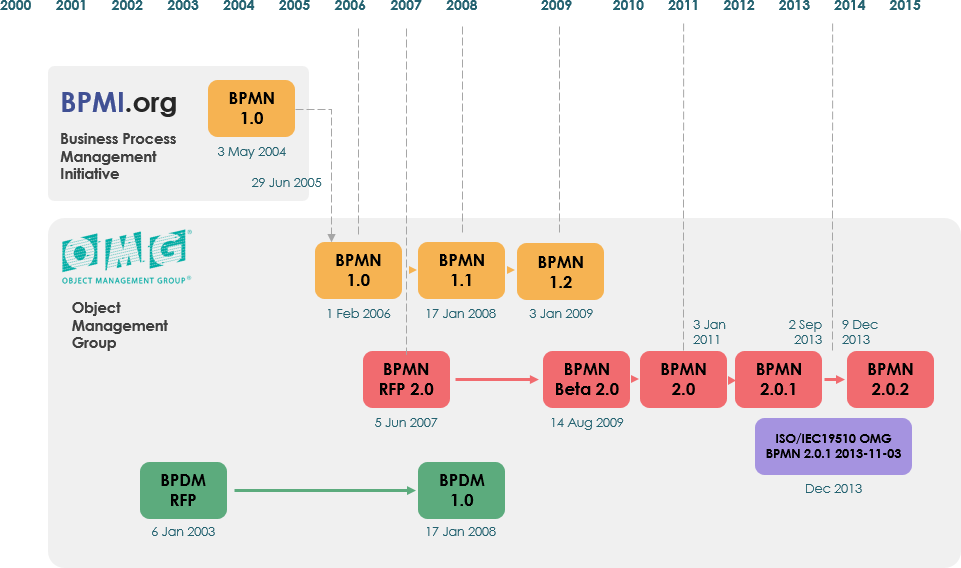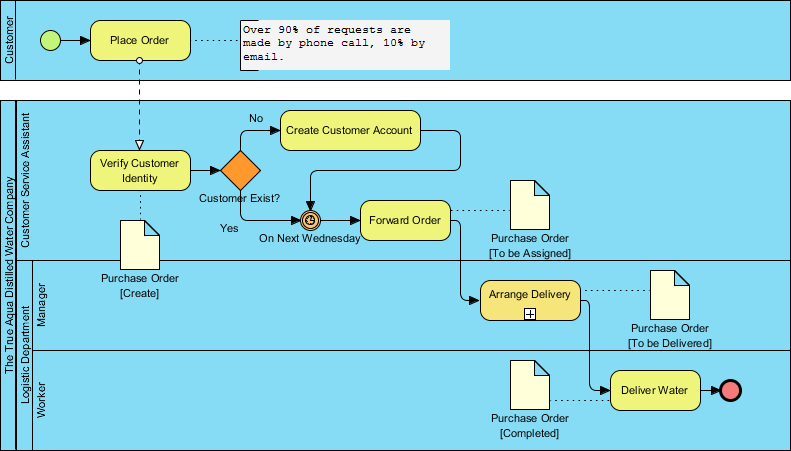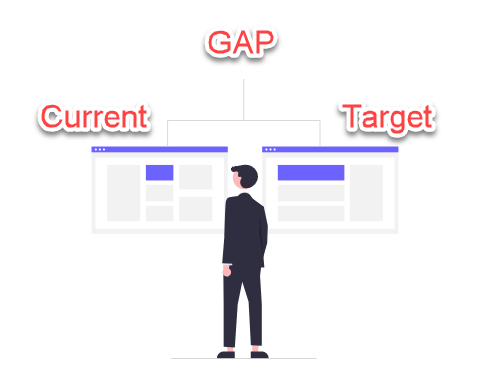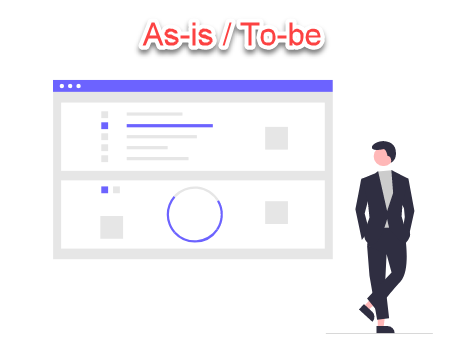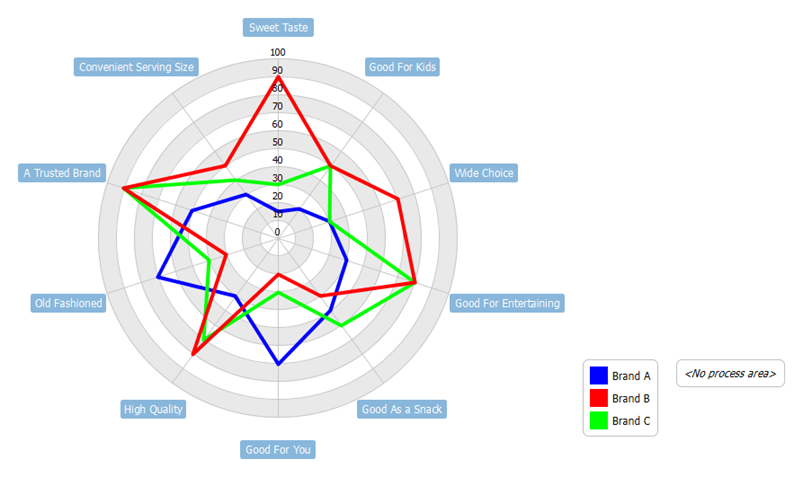Home » Business Process Mapping » Page 2
In today's fast-paced business landscape, staying competitive means optimizing your processes for maximum efficiency. Visual Paradigm's Process Map Designer is your key to unlocking the full potential of your business operations. Whether you're a seasoned professional or new to process design, our flexible 2D process map designer is designed to make your life easier and your processes more efficient. Matrix-Style Process Map Editor Visual Paradigm's Process Map Designer offers a unique and intuitive matrix-style editor that revolutionizes the way you plan and design business operations. Say goodbye to cumbersome and rigid process design…
continue reading →
In the dynamic world of business, staying ahead of the curve is crucial to success. To thrive in today's competitive landscape, you need more than just a good product or service—you need efficient and streamlined processes. That's where our comprehensive suite of Business Analysis & Design tools comes into play. These tools are your key to improving efficiency, boosting productivity, and achieving your strategic goals. Strategic Planning: Define Your Path to Success Every successful business begins with a clear vision and well-defined strategic goals. Our Strategic Planning tool provides you with the framework…
continue reading →
Introduction UML (Unified Modeling Language), BPMN (Business Process Model and Notation), and ArchiMate are all visual modeling languages used in different domains of software engineering and enterprise architecture. Each of them serves specific purposes and has its own strengths and weaknesses. Here's a brief comparison of UML, BPMN, and ArchiMate in visual modeling: UML (Unified Modeling Language): Purpose: UML is a general-purpose modeling language used primarily in software engineering and system design. It is also applied in various other domains like business process modeling and data modeling. Notation: UML provides a broad range…
continue reading →
Introduction In the dynamic world of business, where efficiency and clarity are paramount, there's a tool that stands out as a beacon of innovation and simplicity—Visual Paradigm. This introduction is your first step into a realm of business process management that will empower you to visualize, refine, and optimize your workflows like never before. Visual Paradigm isn't just a tool; it's a game-changer. With its Business Process Model and Notation (BPMN) prowess, it brings a new level of understanding to complex workflows. Whether you're a seasoned business analyst or a stakeholder eager to…
continue reading →
What is BPMN Business Modeling delves into the foundational concepts and components of BPMN (Business Process Model and Notation), a widely adopted framework for visually representing and documenting business processes. In this comprehensive exploration, we navigate through key aspects, starting with the definition of business goals and their intricate connection to related business processes. Understanding that a business process comprises a coordinated set of activities performed within a defined framework is essential to appreciating the significance of BPMN. BPMN was introduced with a primary aim: to offer a universal notation system that bridges…
continue reading →
BPMN, which stands for Business Process Model and Notation, is a widely adopted and standardized modeling language for representing business processes. BPMN was originally developed by the Business Process Management Initiative (BPMI) and is currently maintained by the Object Management Group (OMG). In 2005, these two entities merged, leading to subsequent updates in the BPMN standard. The latest version, known as BPMN 2.0, was introduced in 2011 with the objective of establishing a unified specification for creating Business Process Model and Notation diagrams. This latest iteration introduced additional levels of detail, including features…
continue reading →
Businesses and organizations are constantly looking for ways to improve their operations, whether it's increasing efficiency, reducing costs, or improving the customer experience. One way to achieve these goals is by performing a Current State/Future State analysis. This type of analysis is a powerful tool that allows organizations to identify and map their current processes, as well as define and plan for future processes that will help them achieve their desired goals. What is Current State/Future State Analysis? Current State/Future State analysis is a process that involves mapping out the current state of…
continue reading →
Introduction In today's competitive market, customer satisfaction is key to the success of any business. A smooth and efficient sales process can make all the difference in ensuring customers leave with a positive experience and come back for more. However, identifying inefficiencies and bottlenecks in a sales process can be challenging, and developing a plan to improve it can be even more daunting. That's where an As-Is to-Be analysis comes in. In this article, we will explore how a retail company used this analysis to improve their sales process and ultimately increase customer…
continue reading →
What is a Radar Chart? A radar chart is a graphical representation of data that is used to display performance or comparison of multiple variables on a two-dimensional plane. Also known as a spider chart, web chart, or star chart, a radar chart consists of a series of spokes that radiate outward from a central point. Each spoke represents one of the variables being measured, and the length of the spoke indicates the value of the variable. The data for each variable is plotted on the chart as a series of points, which…
continue reading →
Welcome to our page about Fact Model, a powerful tool for businesses and organizations looking to solve complex problems. Here, we will explain what a fact model is, provide a detailed history, discuss why fact models are important, and show you how to create a fact model using Visual Paradigm. Understanding Fact Model What is Fact Model? A fact model is a diagrammatic representation of the business domain, which captures the relevant information about the business and the relationships between those pieces of information. The goal of a fact model is to provide…
continue reading →

